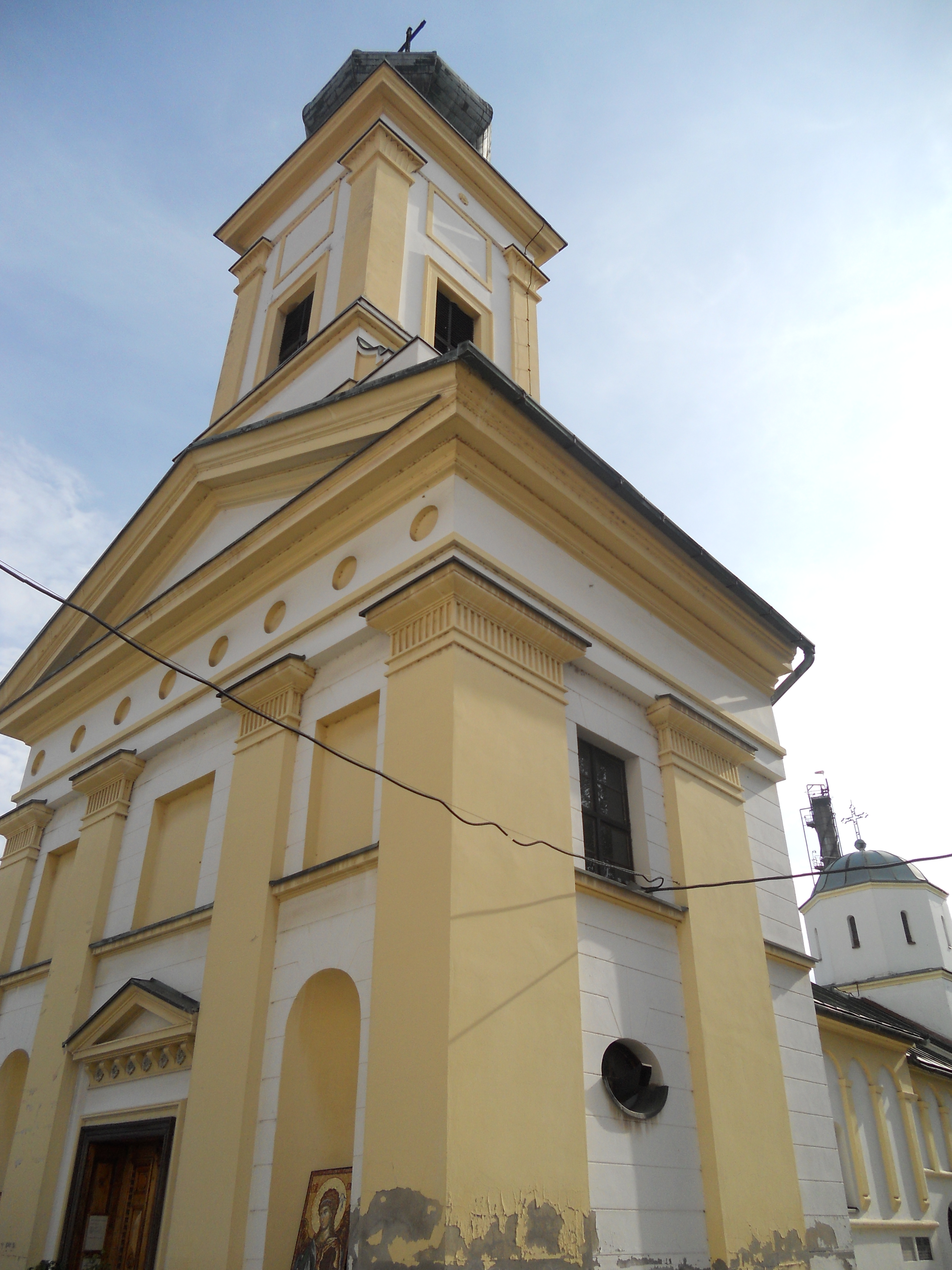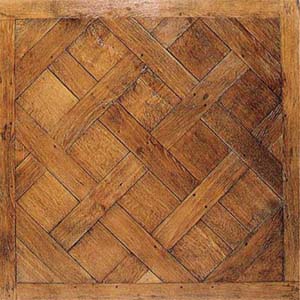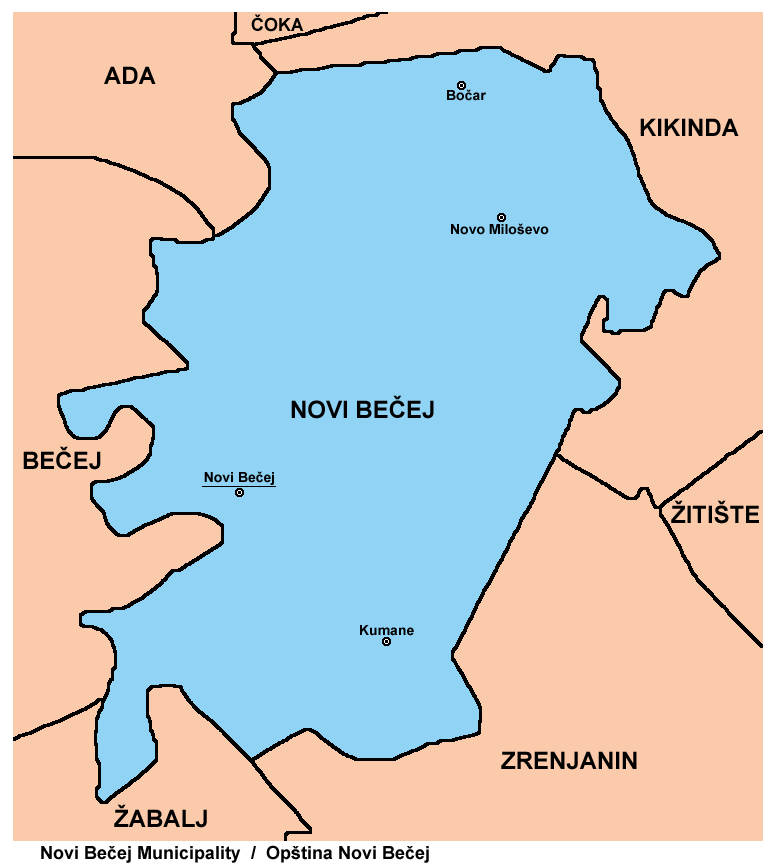|
Spirta House, Belgrade
The Spirta House () is a building located in Zemun, Belgrade, the capital of Serbia. Built in 1855, today is the location of the Zemun Home Museum (). Since 1965 has been protected as the cultural monument. The house is the only preserved representative of the Gothic Revival architecture in the wider Belgrade area. Spirta family The Spirta family is of Aromanian origin. They lived in the village of Katranisa (today Pyrgoi) in modern Western Macedonia region of Greece and emigrated north of the Sava and Danube rivers, into the Austria, in 1739. Petar Spirta distinguished himself during the Serb Uprising of 1848–49. They settled in Zemun in the late 18th century and, pursuing several successful business enterprises, soon became a well known and a wealthy family. Their importance was confirmed by the charter of the Austrian Emperor Franz Joseph I by which he bestowed the noble title and the coat of arms to Pavle Georgije Spirta in 1856. Dimitrije Spirta, who built the house, ... [...More Info...] [...Related Items...] OR: [Wikipedia] [Google] [Baidu] |
Neogothic
Gothic Revival (also referred to as Victorian Gothic or neo-Gothic) is an architectural movement that after a gradual build-up beginning in the second half of the 17th century became a widespread movement in the first half of the 19th century, mostly in England. Increasingly serious and learned admirers sought to revive medieval Gothic architecture, intending to complement or even supersede the neoclassical styles prevalent at the time. Gothic Revival draws upon features of medieval examples, including decorative patterns, finials, lancet windows, and hood moulds. By the middle of the 19th century, Gothic Revival had become the pre-eminent architectural style in the Western world, only to begin to fall out of fashion in the 1880s and early 1890s. For some in England, the Gothic Revival movement had roots that were intertwined with philosophical movements associated with Catholicism and a re-awakening of high church or Anglo-Catholic belief concerned by the growth of religio ... [...More Info...] [...Related Items...] OR: [Wikipedia] [Google] [Baidu] |
Vojlovica Monastery
The Vojlovica Monastery () is a Serb Orthodox monastery situated in the Banat region, in the northern Serbian province of Vojvodina. It is in the Pančevo municipality. It was founded during the time of Despot Stefan Lazarević (1374-1427). Vojlovica Monastery was declared Monument of Culture of Exceptional Importance in 1990, and it is protected by Republic of Serbia. See also * Monument of Culture of Exceptional Importance *Tourism in Serbia Tourism in Serbia is officially recognized as a primary area for economic and social growth. The hotel and catering sector accounted for approximately 2.2% of GDP in 2015. Tourism in Serbia employs some 120 000 people, about 4.5% of the countr ... * List of Serb Orthodox monasteries References External linksMore about the monastery Serbian Orthodox monasteries in Vojvodina Cultural Monuments of Exceptional Importance (Serbia) Medieval Serbian Orthodox monasteries Medieval sites in Serbia 14th-century Serbian Orthodox ch ... [...More Info...] [...Related Items...] OR: [Wikipedia] [Google] [Baidu] |
Romanticism
Romanticism (also known as the Romantic movement or Romantic era) was an artistic and intellectual movement that originated in Europe towards the end of the 18th century. The purpose of the movement was to advocate for the importance of subjectivity and objectivity (philosophy), subjectivity, imagination, and appreciation of nature in society and culture in response to the Age of Enlightenment and the Industrial Revolution. Romanticists rejected the social conventions of the time in favour of a moral outlook known as individualism. They argued that passion (emotion), passion and intuition were crucial to understanding the world, and that beauty is more than merely an classicism, affair of form, but rather something that evokes a strong emotional response. With this philosophical foundation, the Romanticists elevated several key themes to which they were deeply committed: a Reverence (emotion), reverence for nature and the supernatural, nostalgia, an idealization of the past as ... [...More Info...] [...Related Items...] OR: [Wikipedia] [Google] [Baidu] |
Conservation-restoration Of Cultural Heritage
conservation and restoration of cultural property focuses on protection and care of cultural property (tangible cultural heritage), including artworks, architecture, archaeology, and museum collections. Conservation activities include preventive conservation, examination, documentation, research, treatment, and education. This field is closely allied with conservation science, curators and registrars. Definition Conservation of cultural property involves protection and restoration using "any methods that prove effective in keeping that property in as close to its original condition as possible for as long as possible." Conservation of cultural heritage is often associated with art collections and museums and involves collection care and management through tracking, examination, documentation, exhibition, storage, preventive conservation, and restoration. The scope has widened from art conservation, involving protection and care of artwork and architecture, to conservat ... [...More Info...] [...Related Items...] OR: [Wikipedia] [Google] [Baidu] |
Radiator (heating)
Radiators and convectors are heat exchangers designed to transfer thermal energy from one medium to another for the purpose of space heating. Denison Olmsted of New Haven, Connecticut, appears to have been the earliest person to use the term 'radiator' to mean a heating appliance in an 1834 patent for a stove with a heat exchanger which then radiated heat. In the patent he wrote that his invention was "a peculiar kind of apparatus, which I call a radiator". The heating radiator was invented by Franz San Galli in 1855, a Kingdom of Prussia-born Russian businessman living in St. Petersburg. In the late 1800s, companies, such as the American Radiator Company, promoted cast iron radiators over previous fabricated steel designs in order to lower costs and expand the market. Radiation vs. convection A ''radiator'' is a device that transfers heat to a medium primarily through thermal radiation. In practice, the term radiator is often applied to any number of devices in which a ... [...More Info...] [...Related Items...] OR: [Wikipedia] [Google] [Baidu] |
Parquet
Parquet (; French for "a small compartment") is a geometric mosaic of wood pieces used for decorative effect in flooring. Parquet patterns are often entirely geometrical and angular—squares, triangles, lozenges—but may contain curves. The most popular parquet flooring pattern is herringbone. Etymology The word derives from the Old French ''parchet'' (the diminutive of ''parc''), literally meaning "''a small enclosed space''". History Large diagonal squares known as ''parquet de Versailles'' were introduced in 1684 as ''parquet de menuiserie'' ("woodwork parquet") to replace the marble flooring that required constant washing, which tended to rot the joists beneath the floors. Such ''parquets en losange'' were noted by the Swedish architect Daniel Cronström at Versailles and at the Grand Trianon in 1693. Materials Woods contrasting in color and grain, such as oak, walnut, cherry, lime, pine, maple etc. are sometimes employed, and in the more expensive kinds the ri ... [...More Info...] [...Related Items...] OR: [Wikipedia] [Google] [Baidu] |
Allied Bombing Of Yugoslavia In World War II
The Allied bombing of Yugoslavia in World War II involved air attacks on cities and towns in the Kingdom of Yugoslavia by the United States Army Air Force (USAAF) and Royal Air Force (RAF), including the Balkan Air Force (BAF), between 1941 and 1945, during which period the entire country was occupied by the Axis powers. Dozens of Yugoslav cities and towns were bombed, many repeatedly. These attacks included intensive air support for Yugoslav Partisan operations in May–June 1944, and a bombing campaign against transport infrastructure in September 1944 as the Nazi Germany, German ''Wehrmacht'' withdrew from Greece and Yugoslavia. This latter operation was known as Operation Operation Ratweek (1944), ''Ratweek''. Some of the attacks caused significant civilian casualties. First bombings The bombings of Serbia and Montenegro lasted from 20 October 1943 to 18 September 1944. Especially hit was the industrial town of Niš in south Serbia. The bombing began on 20 October 1943, in ... [...More Info...] [...Related Items...] OR: [Wikipedia] [Google] [Baidu] |
Allies Of World War II
The Allies, formally referred to as the United Nations from 1942, were an international Coalition#Military, military coalition formed during World War II (1939–1945) to oppose the Axis powers. Its principal members were the "Four Policemen, Big Four" – the United Kingdom, United States, Soviet Union, and Republic of China (1912–1949), China. Membership in the Allies varied during the course of the war. When the conflict broke out on 1 September 1939, the Allied coalition consisted of the United Kingdom, French Third Republic, France, and Second Polish Republic, Poland, as well as their respective Dependent territory, dependencies, such as British Raj, British India. They were joined by the independent dominions of the British Commonwealth: Canada, Australia, Dominion of New Zealand, New Zealand and Union of South Africa, South Africa. Consequently, the initial alliance resembled Allies of World War I, that of the First World War. As Axis forces began German invasion of ... [...More Info...] [...Related Items...] OR: [Wikipedia] [Google] [Baidu] |
Yugoslavia
, common_name = Yugoslavia , life_span = 1918–19921941–1945: World War II in Yugoslavia#Axis invasion and dismemberment of Yugoslavia, Axis occupation , p1 = Kingdom of SerbiaSerbia , flag_p1 = State Flag of Serbia (1882-1918).svg , p2 = Kingdom of MontenegroMontenegro , flag_p2 = Flag of the Kingdom of Montenegro.svg , p3 = State of Slovenes, Croats and Serbs , flag_p3 = Flag of the State of Slovenes, Croats and Serbs.svg , p4 = Austria-Hungary , flag_p4 = Flag of Austria-Hungary (1867-1918).svg , p7 = Free State of FiumeFiume , flag_p7 = Flag of the Free State of Fiume.svg , s1 = Croatia , flag_s1 = Flag of Croatia (1990).svg , s2 = Slovenia , flag_s2 = Flag of Slovenia.svg , s3 ... [...More Info...] [...Related Items...] OR: [Wikipedia] [Google] [Baidu] |
World War I
World War I or the First World War (28 July 1914 – 11 November 1918), also known as the Great War, was a World war, global conflict between two coalitions: the Allies of World War I, Allies (or Entente) and the Central Powers. Fighting took place mainly in European theatre of World War I, Europe and the Middle Eastern theatre of World War I, Middle East, as well as in parts of African theatre of World War I, Africa and the Asian and Pacific theatre of World War I, Asia-Pacific, and in Europe was characterised by trench warfare; the widespread use of Artillery of World War I, artillery, machine guns, and Chemical weapons in World War I, chemical weapons (gas); and the introductions of Tanks in World War I, tanks and Aviation in World War I, aircraft. World War I was one of the List of wars by death toll, deadliest conflicts in history, resulting in an estimated World War I casualties, 10 million military dead and more than 20 million wounded, plus some 10 million civilian de ... [...More Info...] [...Related Items...] OR: [Wikipedia] [Google] [Baidu] |
Donji Grad, Zemun
Donji Grad ( sr-Cyrl, Доњи Град; ''Lower town'') is an urban neighborhood of Belgrade, the capital of Serbia. It is located in Belgrade's municipality of Zemun. Location Donji Grad occupies the central part of Zemun, on the left bank of the Danube. It borders the neighborhoods of Gardoš on the north, Ćukovac and Muhar on the north-west, Kalvarija on the west, Tošin Bunar on the south-west, Retenzija on the south while the sub-neighborhood of Zemunski Kej is located along the Danube's bank. It roughly occupies the area bounded by the streets ''Bežanijska'', ''Vrtlarska'', ''22. oktobra'' and ''Kej oslobođenja''. Administration The local community of Donji Grad, which comprised only the small part of the neighborhood, had a population of 8,438 in 1981. Local communities of Dunav and Zemunski Kej were detached from Donji Grad in the 1980s, so the population diminished to 3,214 in 1991 and 3,104 in 2002. However, with all the local communities which forme ... [...More Info...] [...Related Items...] OR: [Wikipedia] [Google] [Baidu] |
Novi Bečej
Novi Bečej (, ) is a town and municipality located in the Central Banat District of the autonomous province of Vojvodina, Serbia. The town has a population of 10,967, while Novi Bečej municipality has 19,886 inhabitants (2022 census). Name Novi Bečej means "New Bečej". In the past it was known as ''Turski Bečej'' ( sr-cyrl, Турски Бечеј, "Turkish Bečej"), while the current town of Bečej, across the river Tisa (in the Bačka region) was in the past known as ''Stari Bečej'' (Serbian Cyrillic: , "Old Bečej"). There are several theories about town's name origin. The first one is that it derives from ''Castellum de Beche'', which was the name of the fort located near today's town center. The other theory is that the name was given after the family Wechey, which used to rule the settlement and the land around modern-day Novi Bečej. The town was also known as ''Turski Bečej'' (Турски Бечеј). In 1919 it was renamed ''Novi Bečej'' (Нови Беч ... [...More Info...] [...Related Items...] OR: [Wikipedia] [Google] [Baidu] |








